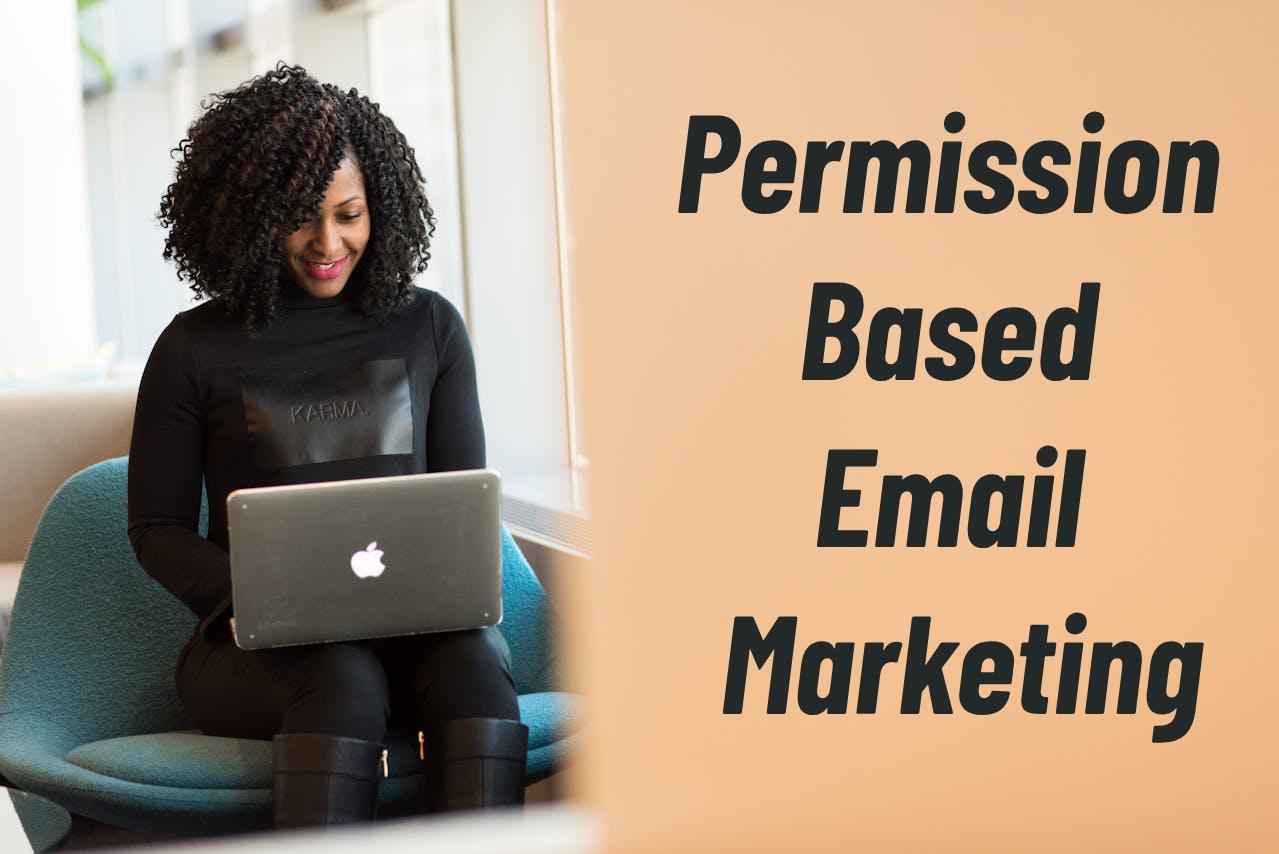Table of Contents
- What is Permission-Based Email Marketing?
- Why is Permission-Based Email Marketing Important?
- Key Strategies for Permission-Based Email Marketing
- Common Mistakes to Avoid
- Tools and Technologies for Permission-Based Email Marketing
- Expert Insights on Permission-Based Email Marketing
- Key Takeaways
- FAQs about Permission-Based Email Marketing
- Final Thoughts
Did you know that permission-based email marketing can boost your engagement rates by over 50% compared to sending unsolicited emails? In today’s digital landscape, reaching your audience effectively means respecting their preferences and building trust. Let’s dive into how you can master permission-based email marketing in 2025 and create lasting connections with your customers.
What is Permission-Based Email Marketing?
Permission-based email marketing is the practice of sending emails only to individuals who have explicitly agreed to receive them. This means your subscribers have willingly given you their consent, usually by filling out a form or checking a box on your website. In contrast to buying email lists or sending unsolicited messages, permission-based email marketing focuses on building relationships with people who are genuinely interested in your brand.
Why is Permission-Based Email Marketing Important?
There are several reasons why focusing on permission-based email marketing is crucial:
Improved Engagement: People who opt-in are more likely to open, read, and interact with your emails.
Higher Deliverability: Email providers favor senders with good reputations, leading to fewer emails landing in spam folders.
Stronger Customer Relationships: Building trust by respecting subscriber preferences fosters loyalty.
Legal Compliance: Many regulations, like GDPR and CAN-SPAM, require explicit consent for email marketing.
Better ROI: Engaged subscribers are more likely to convert into paying customers.
Key Strategies for Permission-Based Email Marketing
To get the most out of permission-based email marketing, consider these effective strategies:
Crafting Compelling Opt-In Forms
Your opt-in form is the gateway to building your email list. Make sure it’s attractive, easy to find, and clearly communicates the value subscribers will receive.
Offer Incentives: Provide something valuable in exchange for signing up, such as a discount, free ebook, or exclusive content.
Keep it Simple: Ask for only essential information, like name and email address, to minimize friction.
Be Transparent: Explain what type of content subscribers will receive and how often they can expect emails.
Use Clear Call-to-Actions: Make it obvious what action you want visitors to take, such as “Subscribe Now” or “Get Your Free Guide.”
Implementing Double Opt-In
Double opt-in is a process where subscribers confirm their email address by clicking a link in a confirmation email. It adds an extra layer of verification and ensures that only genuinely interested people are added to your list.
Verify Email Addresses: Reduces the risk of fake or misspelled email addresses entering your system.
Increase Engagement Rates: Confirms that subscribers are truly interested in receiving your emails.
Improve Sender Reputation: Demonstrates to email providers that you’re following best practices.
Segmenting Your Email List
Segmentation involves dividing your email list into smaller groups based on demographics, interests, behavior, or other criteria. This allows you to send more targeted and relevant emails, which can significantly improve engagement.
Demographic Segmentation: Group subscribers by age, gender, location, or other demographic data.
Interest-Based Segmentation: Categorize subscribers based on their expressed interests or the types of content they’ve interacted with.
Behavioral Segmentation: Target subscribers based on their actions, such as website visits, purchases, or email engagement.
Personalization: Use subscriber data to personalize email content, subject lines, and offers.
Delivering Valuable Content Consistently
The key to keeping subscribers engaged is to provide them with content that they find valuable and relevant. Regularly share helpful tips, insights, product updates, or exclusive offers.
Understand Your Audience: Know what your subscribers are interested in and tailor your content accordingly.
Provide Solutions: Offer practical advice and solutions to their problems or challenges.
Share Industry Insights: Keep subscribers informed about the latest trends and developments in your field.
Create Engaging Content: Use a mix of text, images, and videos to make your emails more visually appealing.
Regularly Cleaning Your Email List
Over time, email lists can become outdated or filled with inactive subscribers. Regularly cleaning your list by removing bounced emails, unsubscribed addresses, and inactive users can improve your deliverability and engagement rates.
Remove Bounced Emails: Immediately remove email addresses that result in hard bounces (permanent delivery failures).
Unsubscribe Inactive Subscribers: Periodically remove subscribers who haven’t opened or clicked on your emails in a long time.
Implement a Re-Engagement Campaign: Before removing inactive subscribers, try to re-engage them with a special offer or personalized email.
Common Mistakes to Avoid
Even with the best intentions, it’s easy to make mistakes with permission-based email marketing. Here are some common pitfalls to watch out for:
Buying Email Lists: This is a big no-no. Sending emails to people who haven’t given you permission is illegal and can damage your reputation.
Hiding the Unsubscribe Link: Make it easy for subscribers to unsubscribe from your emails. Hiding the unsubscribe link can lead to frustration and spam complaints.
Sending Too Many Emails: Bombarding subscribers with too many emails can lead to fatigue and unsubscriptions. Find a balance that keeps them engaged without overwhelming them.
Ignoring Subscriber Preferences: Pay attention to what your subscribers are interested in and tailor your content accordingly.
Not Tracking Your Results: Monitor your email metrics, such as open rates, click-through rates, and conversion rates, to identify what’s working and what’s not.
Tools and Technologies for Permission-Based Email Marketing
Numerous tools can help you streamline and optimize your permission-based email marketing efforts. Here are a few popular options:
Email Marketing Platforms: Mailchimp, Constant Contact, Sendinblue, and HubSpot offer features like email design, list management, automation, and analytics.
CRM Systems: Salesforce, Zoho CRM, and Pipedrive can help you manage customer relationships and personalize your email marketing campaigns.
Opt-In Form Builders: OptinMonster, Sumo, and Thrive Leads make it easy to create attractive and high-converting opt-in forms.
Email Verification Services: ZeroBounce, NeverBounce, and BriteVerify can help you clean your email list by removing invalid or risky email addresses.
Expert Insights on Permission-Based Email Marketing
I asked a few marketing experts for their insights on permission-based email marketing. Here’s what they had to say:
“Focus on providing value to your subscribers. The more valuable your content is, the more likely they are to stay engaged and convert into customers.” – Neil Patel, Digital Marketing Expert
“Always respect subscriber preferences. Make it easy for them to unsubscribe or update their preferences. This shows that you value their time and attention.” – Ann Handley, MarketingProfs
“Personalization is key. Use subscriber data to personalize your email content and subject lines. This can significantly improve your engagement rates.” – Brian Halligan, HubSpot
I once worked with a client who was struggling with low email engagement. After switching to a permission-based email marketing strategy and implementing double opt-in, we saw a 40% increase in open rates and a 25% increase in click-through rates within just a few months. The key was focusing on building a list of genuinely interested subscribers and providing them with valuable content.
For more insights, check out articles on reputable marketing websites like MarketingProfs focusing on email marketing strategies, and the Direct Marketing Association (DMA) for best practices in permission-based email marketing.
Key Takeaways
Permission-based email marketing is the foundation of successful email campaigns.
Always obtain explicit consent before sending emails.
Provide valuable content consistently to keep subscribers engaged.
Regularly clean your email list to maintain high deliverability.
Use personalization to improve engagement and conversion rates.
Consider how to maintain an ethical approach to email marketing
FAQs about Permission-Based Email Marketing
Q: What is the difference between single opt-in and double opt-in?
A: Single opt-in is when a subscriber is immediately added to your email list after filling out a form. Double opt-in requires subscribers to confirm their email address by clicking a link in a confirmation email. Double opt-in is generally recommended because it ensures that subscribers are genuinely interested in receiving your emails. This process improves permission-based email marketing, ensuring only those who actively want to receive communications are added to your list.
Q: Is it legal to buy email lists?
A: No, it is generally illegal and unethical to buy email lists. Sending emails to people who haven’t given you permission violates anti-spam laws like GDPR and CAN-SPAM and can damage your reputation. Permission-based email marketing always requires explicit consent.
Q: How can I get more subscribers to opt-in to my email list?
A: Offer valuable incentives, such as discounts, free ebooks, or exclusive content. Make your opt-in form easy to find and use clear call-to-actions. Promote your email list on your website, social media channels, and other marketing materials. This strategy is central to permission-based email marketing.
Q: How often should I clean my email list?
A: You should clean your email list regularly, at least once every three to six months. Remove bounced emails immediately and unsubscribe inactive subscribers to maintain high deliverability and engagement rates. Maintaining list hygiene is crucial for effective permission-based email marketing.
Q: What should I do if someone unsubscribes from my email list?
A: Respect their decision and immediately remove them from your email list. Do not try to persuade them to stay or resubscribe. Providing an easy unsubscribe process is a fundamental part of permission-based email marketing.
Final Thoughts
In 2025, permission-based email marketing is not just a best practice; it’s a necessity. By focusing on building relationships with subscribers who genuinely want to hear from you, you can improve your engagement rates, build brand loyalty, and drive more sales. Make sure you’re always providing value, respecting subscriber preferences, and staying up-to-date on the latest email marketing trends.
Ready to take your permission-based email marketing to the next level? Subscribe to our newsletter for exclusive tips, strategies, and insights on how to grow your email list and boost your engagement. Let’s build a community of engaged subscribers together!

















